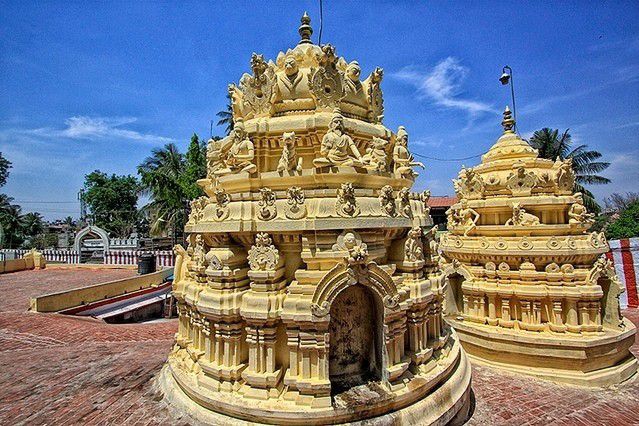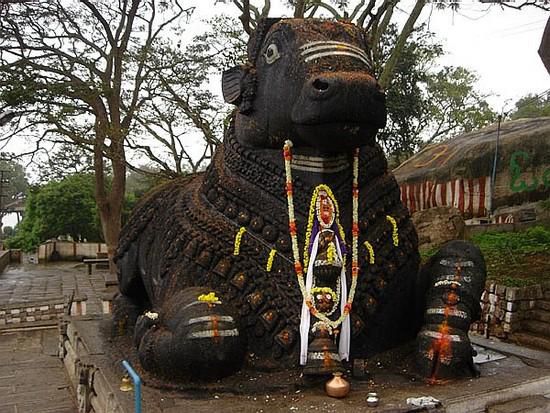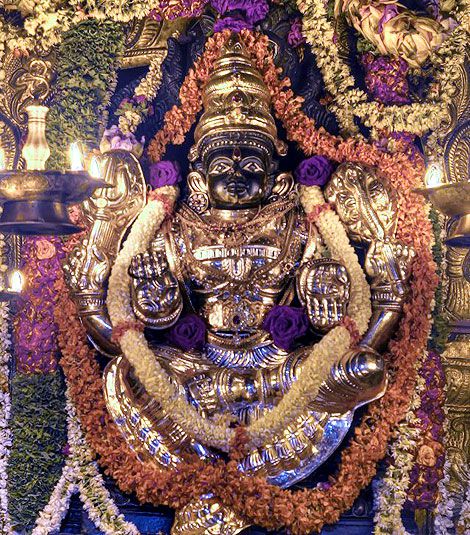No products in the cart.
Srinath Seshadri
Forum Replies Created
Viewing 9 posts - 1 through 9 (of 9 total)
- AuthorPosts
 Srinath SeshadriParticipant
Srinath SeshadriParticipantMantra traditionally refers to Vedic mantras. They are only taught to those that have qualified themselves to learn them, and there are terms and conditions for their recitation. Almost always they are preceeded by a bij syllable, often Om.
Shloka can refer to any verse or even a section of prose.
Stotra and stuthi are prayers – often prayers of glorification. They may be written in prose or verse.
We can also add sutra to the list. A sutra is a code that expresses the essence of all knowledge in a minimum of words. It must be universally applicable and faultless in its linguistic presentation; this is the definition of sutra according to Vayu and Skanda Puranas. Thus we have Vedanta sutra.
On an interesting note, the Hare Krishna mahamantra is a Vedic mantra but it was originally chanted with Hare Rama Hare Rama first and then Hare Krishna second. I have heard that the order was reversed so that it was no longer a Vedic mantra and so anyone could chant it and there would be no hard and fast rules for chanting. This means that the power of Vedic mantras has been made available to everyone regardless of background, caste, creed, nationality or qualifications.
In some areas down south and up in Nepal it is chanted:
Om hare rama hare rama rama rama hare hare
hare krsna hare krsna krsna krsna hare hare~Excerpts taken from a post by Murari Das
Another defenition:
A Sloka is referred to mean a verse of two lines, of sixteen syllables each, ie. written in the Anushtubh metre… An example of a Sloka would be:Sarasvati namastubhyam varadē kāmarūpiṇi| Vidyārambham kariṣyāmi siddhirbhavatu mē sadā||
A Mantra, on the other hand, is a longer prayer, usually composed of many Slokas. It is also called Stotra… An example of a Mantra would be Shiva Tandava Stotra.
 Srinath SeshadriParticipant
Srinath SeshadriParticipantThe OM mantra is a universally chanted mantra even though it has its origin in Sanatana Dharma. The fact that it has spread and transcended various boundaries clearly shows and proves it significance.
There are 2 scientific explanations to why the OM mantra is widely practiced.
1. When the Om mantra is chanted, the frequency of the vibrations is said to be 432Hz which happens to be the vibrational frequency of everything in the universe. This scientific finding is the justification of the saying ‘in harmony with the being’.
2. Not to long ago, scientists conducted a research in which the subjects had never chanted Om mantra were asked to chant it for few minutes and each of their chants were recorded. The time frequency analysis of it showed irregular waveforms which indicated unsteadiness in the mind. They were requested to chant the mantra frequently for a few days, the experiment was repeated. The time-frequency analysis this time had some surprising insights. The waveforms were improved with regular spacing, had almost perfect symmetry and harmony. Not only had these participants witnessed dramatic improvements in focus, concentration & steadiness, but found themselves to be in peace, witnessed reduction in mental stress & could remain calm all the time.
 Srinath SeshadriParticipant
Srinath SeshadriParticipantI’m unable to figure out the stotra/ poem you are referring to in the above post. This link here has a great collection of all the Shiva stotrams and sanskrit articles. I am hoping you will find the document among this.
 Srinath SeshadriParticipant
Srinath SeshadriParticipantI recently happened to visit the Dodda Ganesha temple in Bangalore and I will definitely recommend anyone in Bangalore to visit the temple. It’s a very popular temple in Bangalore is a fulfilling experience offering prayers to the magnificent Ganesha in this temple. This monolithic Ganesha is in the same temple complex as the Nandi statue. It stands about 18 ft. in height and 16 ft. in width. This Ganapati is popularly known as Shakthi Ganapati or Satya Ganapati.
The idol is adorned with different decorations each day of the week. On one of the days this huge idol is covered in butter weighing over 100 kg’s. People from different walks of life come here to seek blessings of Lord Ganesha.
October 20, 2016 at 10:05 am in reply to: Do people who are enlightened get angry or have emotional bursts? #13371 Srinath SeshadriParticipant
Srinath SeshadriParticipantListen to this great explanation by Sadhguru
 Srinath SeshadriParticipant
Srinath SeshadriParticipantSo many gods,so many goddesses,so little knowledge.
Hinduism offers an explanation for this complicated theology of millions of gods. I find this explanation quite satisfying. For a country, state, or city to run properly, the government creates various departments and employs individuals within those departments — teachers, postal workers, police and military personnel, construction works, doctors, politicians, and so many more. Each of these departments hire out hundreds or thousands of individuals carrying out their respective duties and each sector has an individual or multiple individuals that oversees the activities of that one unit. Each head of an area is endowed with certain privileges and powers which facilitates them in their tasks.
With this logic ,thereby we can conclude on the fact that,thus,Hinduism is not proverbially immense,but numerically,immense as well. Or change that to uncountable. Yes,Hinduism has more Gods and Goddesses than a number one can ever even imagine. Or even count.
And what is that very large number?Let’s find out as you read this interesting essay on Hindu Gods and Goddesses.
Most theistic schools of hindu Philosophy have explained that in order to keep the universe running, Krishna, the supreme being, has put into place individuals that oversee different parts of the material universe. These individuals are powerful beings that have been appointed by Krishna and have been bestowed with the necessary powers and abilities to manage and govern their area of creation. They can be referred to as demigods. For example, there is someone responsible for the sun and his name is Surya. The goddess Saraswati is the overseer of knowledge. The creator of the material universe is known as Brahma. The destruction of the universe is overseen by Shiva and Vishnu serves as the maintainer. There are individuals overseeing the oceans, the wind, and practically every facet of creations. When seen from this perspective, 33 million is not that big a number.We take it completely for granted that the sun is always perfectly fixed in its position. However it is not so,since texts mention Surya being driven in his chariot by the Ashvins,his sons,towards earth in the mornings.But scientifically, if the sun is to move even slightly closer to the earth we would burn to a crisp and if it were to distance itself from us, we would become frozen icicles. We thus and also take it for granted that all day and all night, there is oxygen in the atmosphere for us to breathe. It’s not by chance that all this is existing. It has been placed here and someone has been put in charge of each aspect of it. For example, we plug our electronic gadgetry into power outlets. That’s not magic and it’s not by chance. It was constructed into the building to facilitate our needs. If for some reason, there’s a massive power outage, then the person in charge would have to take responsibility for its maintenance. Hence,things are made to function. And what makes them function? One and only God. Or 33 Crore gods and goddesses,in the case of Hinduism.
This material universe functions like a big governmental structure with heads of departments managing their respective affairs. These heads or “demigods” have also been endowed with abilities to grace humanity with certain boons and that’s why so many people pray to the different gods to have their material wishes fulfilled. Granting boons to whatever degree deemed appropriate is up to the individual God.
According to the scriptures, the Gods live in different realms with life spans that are much longer than ours. For example, when six months pass here on earth, only one day has gone by in the upper realms. Another six months equals one night. When a full day goes by for them, a full year has passed here on earth. According to human calculation, their lives span to a few billion years. This may sound quite fantastic to one who is hearing it for the first time, however, it’s not much different than what Einstein said about the relativity of time. [Just for a purpose of note,I feel proud to write in herewith of the event of Einstein visiting my great grandfather Prafulla Chandra Ghosh in both Germany and India].
Moving on.There is also a story from the Puranas which parallels Einstein’s hypothetical experiment. A yogi, by the power of his trained mind, exited the earthly realm for the higher planetary realms, was informed by the inhabitants of these higher realms that millions of years had instantly passed on Earth in the mere moments since he had entered the higher realms. They also told him that all of his relatives and everyone he had ever known was deceased. The understanding that time is relative is nothing new for the Hindu tradition. It was quite common knowledge for most Hindus. This is what much of Sāñkhya and Yoga Philosophy has taught to us, you,though the first one is aesthetic while the latter is very much theistic.
However,even that the Gods live for billions of human years, for them one of their years feels like a year would feel for us here on earth. After their allotted span of time, most of them will also die and then different living beings are placed into those positions to continue overseeing their duties. This is similar to most governmental posts. A person in that post can serve in that capacity for a certain duration and then is sacked and replaced.
It’s not an eternal post,obviously and definitely not an eternal post. Oh no.
There are realms that go beyond the heavenly sphere. The highest realm within the material cosmos is Satyaloka, where Brahma resides. His entire life span, if calculated in terms of human years, is 311 trillion years.
He is the creator,and Lord Shiva is said to be the destroyer. After his allotted time of 311 trillion years which feel to him like a 100 years would to us, he also has to die. We thus conclude,saying is that nothing in the material world is permanent!
 Srinath SeshadriParticipant
Srinath SeshadriParticipantBangalore is known as the Home for India’s spiritual gurus. Bangalore is rich in spiritual cultures and religions and is famous for its diversifying , attractive and interesting temples. If you are in Bangalore, then I definitely recommend visiting these 5 famous temples of Bangalore:
1.Halasuru Someshwara Temple:
Located in Ulsoor, it is the oldest temple of Chola dynasty. It depicts the architectural masterpiece dedicated to Lord SHIVA.There is a Nandi pillar standing near the tower over the entrance gate.Images of gods and goddesses from Hindu mythology have been engraved on this tower.
It is believed that Kempe Gowda, tired after hunting, rested under a tree and nodded off on the present site of the sanctuary. Lord Shiva appeared to him in a dream, uncovering the presence of hidden treasure and instructed him to build the sanctuary committed to him with it.2.Gavi Gangadhareshwara Temple:

Situated in Bangalore is an example of finite Indian rock-cut design, This temple is popular for its a huge Trident of Lord Shiva
And the enigmatic stone discs in the forecourt and the precise arranging permitting the sun to sparkle on a holy place in certain time.3.Bull temple:

Temple of the 16th century constructed during the rule of Kempegowdas, also known as Dodda Ganeshana Gudi or Nandi Temple made of granite. This temple illustrates the Vijayanagara engineered architectural design constructed on a hill top. People worship Nandi, the sacred bull in Hinduism, Lord Shiva’s vahana. Idol of Nandi at this temple is largest in the whole world. There is a temple of Lord Ganesha and Lord shiva, located at the foot of the hill.4.Shri Nimishamba Devi Temple:

Situated on the banks of river Cauvery is accepted to be the incarnation of the Goddess Parvathi, the consort of Lord Shiva.
This spot is considered as a heavenly place. It is trusted that Shri Nimishamba is going to evacuate everyone of the issues and inconveniences of her aficionados inside a minute. That is the reason she is called Nimishamba, in which, Nimisha implies a minute.
It is believed that the with a minute, prayers of the devotees are fulfilled .5. ISKON Temple:
Located on Chord Road on a seven-acre hill known as the ‘Hare Krishna Hill’ is the ISCON temple dedicated to Shri Radha Krishna.There is also a Vedic Theatre, Vedic Museum, a lecture hall, and an exhibition area. It’s an amazing blend of glass and gopuram, a combination of ancient and contemporary styles. Srinath SeshadriParticipant
Srinath SeshadriParticipantThe Ashtamsa Varada Anjaneya Temple in Peelamedu is a beautiful temple and a temple one must visit. The abhishekams of the Anjaneya deity is a treat to see. The deity is decorated everyday in different ways – Vada Alankaram, Surya Kirana Alankaram, Muthangi Alankaram, Butter Alankaram, Swaya Roopa alankaram, Raja alankaram etc. The Anjaneya here has got eight distinct characteristics.
1. Right hand that gives boons (Varada Hastham):
In most Hanuman temples, he can be seen with folded hands (Anjali Hastham). However, in this temple, the right hand is seen raised as if to tell his devotees not to fear when He is there to protect them.2. Left hand that holds a mace (Gathayudha):
The mace in his left hand symbolises that there is no defeat for those who surrender to the Lord. Moreover, the Gatha (mace) destroys the six evils of the mind, namely, Kama (lust), Krotha (anger), Lobha (Greed), Moha (attachment), Mada (pride) and Matsarya (Jealousy) collectively known as the Arishadvargas.3. Countenance facing West:
The Western ghats are a part of the Sanjeevi Parvatha that Hanuman brought to revive Rama-Lakshmana during the Ramayana war. This mountain range is full of medicinal herbs that can cure any disease. The face of Sri Ashtamsa Varada Anjaneya Swamy is turned towards the West to symbolize worshiping him would cure all physical and mental ailments.4. Feet facing South:
South is the direction of Yama, the lord of Death. The feet facing South protects devotees from untimely death, and grants them the boon of long, healthy and peaceful life.5. Tail facing North:
In the Ashtamsa Varada Anjaneya Swamy Temple Coimbatore, the tail of the Lord is fully visible to the devotees. The nine planets that are responsible for a person’s happiness, misery, disease and prosperity are found in the tail and worshiping the tail rids one of all the problems connected with horoscope or planetary motion. Moreover, North is the direction of Kubera, the Lord of Wealth. Worshiping the tail, brings prosperity and material success to the devotees.6.Rudramsam:
Lord Shiva’s powers known as Rudramsam are embodied within Sri Hanuman.In this temple, Lord Hanuman is found within the shape of a Shivalinga and so worshiping him is equivalent to worshiping Lord Shiva.7. Lakshmi Kadaksham:
Goddess Lakshmi is found within the raised right hand of Sri Hanuman and is willingly waiting to grant all Aishwaryams (wealth) to the devotees.8. Netra Deekshanyam (Speciality of the Eyes):
The eyes of Sri Hanuman in this temple are special. These beautiful life like compassionate eyes reflect the brightness of the Sun during day and the gentleness of the moon in the evenings. From whichever direction one were to view the Lord, the eyes seem to be looking and providing comfort.Temple Timings:
Morning: 7.30 am to 12 pm
Evening: 5.30 pm to 9 pmContact Details:
Shri Narayana Bhattachar – 94874 84624
Shri Muralidhara Bhattachar – 94433 34624 Srinath SeshadriParticipant
Srinath SeshadriParticipantThe ones where in the birth date, birth place and time are correlated and are read are found to be every accurate.
- AuthorPosts
Viewing 9 posts - 1 through 9 (of 9 total)
